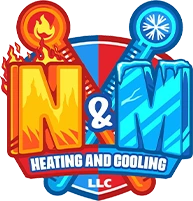Upgrading your home’s heating and cooling system to a heat pump offers numerous advantages. Heat pumps are efficient, environmentally friendly, and can help reduce your energy bills. This investment can significantly improve your home’s comfort and overall value.
Benefits of Upgrading to a Heat Pump
Energy Efficiency
Heat pumps are highly energy-efficient systems for heating and cooling your home. Unlike traditional systems that generate heat, heat pumps transfer heat from one place to another, using less energy in the process. This efficiency not only reduces your carbon footprint but also improves the comfort level in your home. Modern heat pumps come with advanced features such as variable speed compressors, which further enhance efficiency by adjusting output based on the current demand. This means you get consistent comfort without the high energy cost.
Environmental Impact
Another benefit of upgrading to a heat pump is its positive impact on the environment. Heat pumps use electricity rather than fossil fuels, reducing greenhouse gas emissions. By opting for a heat pump, you are contributing to a more sustainable and eco-friendly future. Many heat pumps also use environmentally friendly refrigerants, which have lower global warming potential compared to older systems. This makes heat pumps a conscientious choice for homeowners looking to reduce their environmental impact.
Cost Savings
Investing in a heat pump can lead to significant cost savings over time. The energy efficiency of these systems translates into lower utility bills. While the initial installation cost may be higher, the long-term savings on energy expenses make it a worthwhile investment. Additionally, heat pumps often have a longer lifespan than traditional heating systems, leading to fewer replacement costs. With proper maintenance, you can enjoy consistent savings and increased home value from this upgrade.
Types of Heat Pumps
Air Source Heat Pumps
Air source heat pumps are the most common type and are suitable for a range of climates. They transfer heat between your home and the outside air. These systems are relatively easy to install and are known for their efficiency and reliability. Air source heat pumps come in two main configurations: ducted and ductless. Ducted systems use existing ductwork, while ductless systems, also known as mini-splits, do not require ducts, making them ideal for homes without existing ductwork.
Ground Source Heat Pumps
Ground source heat pumps, also known as geothermal heat pumps, exchange heat with the ground. These systems are highly efficient because the ground temperature remains relatively constant throughout the year. While installation involves burying coils in the ground and can be more complex, the long-term efficiency and reduced operating costs make it a smart investment. Geothermal systems are particularly effective for homeowners aiming for the highest levels of energy savings.
Water Source Heat Pumps
Water source heat pumps transfer heat to and from a water source, such as a lake, pond, or underground well. These systems are efficient and reliable, particularly in areas with nearby water bodies. They work similarly to ground source heat pumps but utilize water for heat exchange. Installation may require permits and specific site conditions, but the efficiency and reliability make water source heat pumps an excellent choice for homes with access to appropriate water sources.
The Installation Process
Pre-Installation Assessment
Before installing a heat pump, a thorough pre-installation assessment is essential. Our professionals evaluate your home’s insulation, existing ductwork, and overall energy needs. This assessment helps determine the best type and size of the heat pump for your home. Factors like the layout and size of your home, as well as the climate, play a crucial role in making the right choice.
Key Steps in the Installation
The installation process involves several key steps to ensure your heat pump operates efficiently. First, our technicians prepare the site, including any necessary modifications to your home’s current infrastructure. Next, they install the indoor and outdoor units, connecting them with refrigerant lines and electrical wiring. After securing the units, they test the system for functionality and make any necessary adjustments. This ensures that the heat pump provides optimal performance and integrates smoothly with your existing heating and cooling system.
Post-Installation Checks
After installation, post-installation checks are crucial to confirm everything operates correctly. Our professionals inspect the system for leaks, check the refrigerant levels, and ensure all components are functioning as they should. They also program the thermostat to work seamlessly with your new heat pump. This final step guarantees that your system runs efficiently and keeps your home comfortable year-round.
Common Issues and Maintenance
Typical Problems After Installation
Even with a professional installation, heat pumps can experience common issues. These problems might include unusual noises, refrigerant leaks, or uneven heating and cooling. Dirty filters and blocked ducts can also affect performance. Identifying these issues early helps in preventing major breakdowns and extends the life of your system.
Importance of Regular Maintenance
Regular maintenance is key to keeping your heat pump in optimal condition. Routine checks by our technicians can identify and fix minor issues before they become costly repairs. Cleaning or replacing filters, checking refrigerant levels, and inspecting electrical components are part of regular maintenance. These steps ensure the system runs efficiently, providing consistent comfort in your home. Scheduled maintenance visits also improve the heat pump’s lifespan and performance.
When to Consider Thermostat Replacement
Sometimes, a failing thermostat can affect heat pump performance. If you notice frequent cycling, inaccurate temperatures, or unresponsive controls, it may be time to replace your thermostat. Upgrading to a programmable or smart thermostat can improve system efficiency and provide better temperature control. Our professionals can recommend and install the best thermostat for your heat pump, enhancing overall performance and energy savings.
Conclusion
Upgrading to a heat pump offers numerous benefits, from improved energy efficiency to cost savings and a reduced environmental impact. Understanding the types of heat pumps and the installation process helps in making an informed decision. Regular maintenance and addressing common issues promptly ensure your system operates at its best.
Heat pump installation in Sierra Vista is an investment in comfort and efficiency. To ensure you get the most out of your new system, rely on the expertise of N&M Heating & Cooling LLC. Contact us today to schedule a consultation or learn more about our services. Our team is committed to providing top-quality solutions for your home’s heating and cooling needs.









